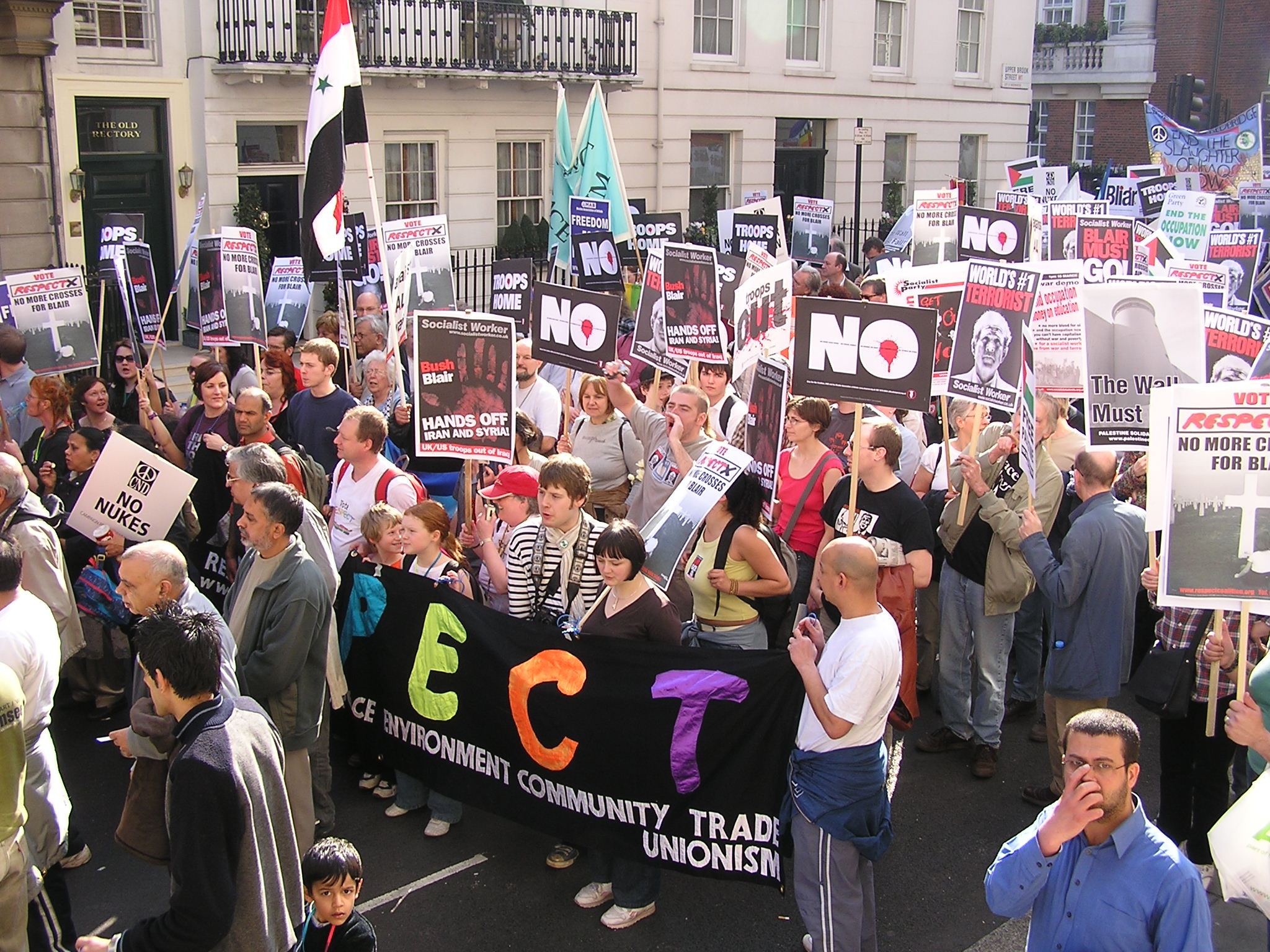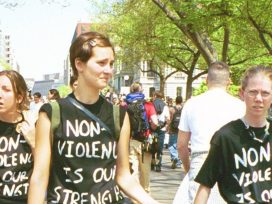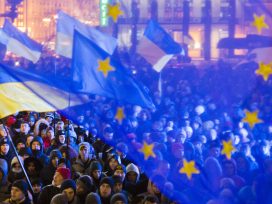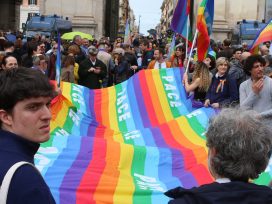Western Europe’s culture of anti-violence continues to exert a magnetic pull on Ukrainian society. But will that be enough to resist Russia’s twenty-first century politics of dog-eat-dog? The answer depends on the strength of Europe’s own conviction, argues philosopher Volodymyr Yermolenko.
In an article written in early 2014, during the Euromaidan protests, I wrote that Europe continues to enlarge to the East, often without being aware of it. Its institutional enlargement is often delayed, and follows an axiological enlargement, the spill-over of values. An important reference point was Milan Kundera’s famous 1983 essay, ‘The Tragedy of Central Europe’. I agreed with Kundera’s reasoning that Europe has parts of its political and cultural body beyond its official borders: ‘Central Europe’ was, Kundera said, a ‘kidnapped West’. I argued that today, post-Soviet eastern Europe continues Kundera’s idea of ‘Central Europe’. But I criticized Kundera for drawing a rigid line between ‘Central Europe’ and what he called ‘Russia’, i.e. the Soviet Union. His concept of ‘Central Europe’ had a dangerous consequence: that the values he cherished would never go further than the eastern borders of Hungary or Czechoslovakia.
The Ukraine of 2004–2005 (the Orange Revolution) and 2013–2014 (the Euromaidan, Revolution of Dignity) began where Kundera stopped. These events showed that axiological enlargements come invisibly – ‘on dove’s feet’, as Nietzsche said – but cause social and geopolitical explosions.
In the five years since 2014 I have become more sceptical about both the speed of Ukraine’s progress and Europe’s readiness to respond to it. But I still think that the European project is much wider than the borders of the EU, and the values that are fundamental to European identity continue to spill over into the East. Ukraine’s 2014 revolution does not stand alone: the 2018 revolution in Armenia, recent protests in Georgia, and the fall of oligarchic power in Moldova, show that ‘axiological Europe’ continues to act as a magnet for former parts of the Soviet Union. ‘Axiological Europe’ is still a magnet for Eastern Europe, and it is important to take this magnetism seriously.
But first let me try to describe this magnetism. For me, a Ukrainian philosopher, Europe is a long project of reducing the space for violence. It is a story of how humans learn to reduce violence against communities, individuals, and nature.

Anti-war demo in London, 2005
Photo from Wikimedia Commons
Progressive anti-violence
Defining Europe this way might surprise you. European history has had waves of regression and returns to barbarianism. It had the Holocaust, two world wars, colonialism, nineteenth–century liberal racism, ‘exterminate all the brutes’ (Joseph Conrad), the ‘triumph of death’ (Gabriele d’Annunzio), torture, misogyny, slavery, hatred, exploitation. It was a ‘dark continent’, in the words of Mark Mazower, and not only in the twentieth century.
All this is true. But what is important for me is that, after most of these phases of violence, Europe tried to re-invent itself. It would be naive to say that ‘it learned a lesson’ (I don’t believe that people learn lessons from history). But it would be fair to say that the institutions and practices it established after the danses macabres of its history made the space for violence narrower than it was. The abolition of the death penalty, the protection of human rights, the establishment of welfare states, and decreased violence in education and the family are some essential features of this process. Europe continues to magnetize other parts of the world not only because of its living standards and culture, but because of its anti-violence vaccine.
Europe’s history of reducing the space for violence has gone through three major phases. In the nineteenth century, the primary aim was reducing violence against communities; in the twentieth century – especially its second half – the focus was on individuals; and in the twenty-first century, dreams are of reducing violence against nature.
This is a simplified scheme, of course: no such ‘emancipation’ project can be fully implemented. But it helps us understand the key collective concepts and metaphors that frame each particular epoch and pre-define the questions they raised.
The nineteenth century was a century in which communities (nations and classes) sought to liberate themselves from the violence of empires, both political and economic. Its peak was in 1848, with both a nationalist ‘springtime of the peoples’ and a communist manifesto; it ended in 1917–1918 with the triumph of the principle of ‘self-determination’ and class-driven revolutions.
The twentieth century (after Europe’s ‘descent to Hades’ in two world wars) shifted the idea of anti-violence from communities to individuals. Not only were communities to be freed from the violence of empires, but individuals were also to be freed from the violence of communities. The twentieth century marked the fight of individuals for their ‘human rights’ (rooted in their humanity, not their community). It started with the Universal Declaration of Human Rights; it imposed itself as a global reference point with the Helsinki Final Act.
The twenty-first century is becoming one in which humans pose the question of their violence against nature. The paradox is that this substantially re-defines Europe’s project of modernity. During the era of secularizing modernity, from the Renaissance to positivism, Europe sought to describe humans as a part of nature. It developed a naturalist and later biological anthropology, which was used as a tool to justify violence. Nature is cruel, so humans can be cruel too, ‘naturalist’ Europe said – from Machiavelli to Spencer and from de Sade to Hitler.
The twenty-first century’s environmental (r)evolution reverses this idea: humans, with Europe as the avant-garde, increasingly admit that they should not be cruel to nature, even though nature can be cruel to them.
The pleasure principle and its negation
Since World War Two, the reduction of the space for violence has been primarily present in western Europe. Soviet and post-Soviet Europe have had a different experience. To the east of the Iron Curtain, violence continued to be an important tool of power. Hannah Arendt’s famous diagnosis that violence can destroy power but can never replace it, was unheard of in Moscow and anywhere else in the USSR. The Ukrainian-Georgian philosopher Vakhtang Kebuladze notes the closeness of the words ‘force’ and ‘violence’ in Russian, Ukrainian and other eastern Slavic languages: sila, syla (force) are close to nasilie, nasyl’stvo (violence).
After World War II, and even after the thaw, dissidents in the USSR were still sent to the Gulag. Tanks were sent to other countries – to Budapest, Prague or Afghanistan. National cultures were still oppressed and human rights were taken seriously only by a handful of dissidents, who formed so-called Helsinki groups.
This difference in attitudes towards violence reflected a much broader difference between the two Cold War camps: their interpretation of modernization and its relation to pleasure and suffering. For western Europe’s twentieth century, modernization implied more hedonism: increasing the quantity of pleasure and reducing the quantity of suffering. This hedonist interpretation of modernization had various roots: the return of hedonism in Renaissance culture (through the rediscovery of Ancient Greek and Roman hedonism) rehabilitated Epicureanism in the early Enlightenment in France (Gassendi, for example); the long tradition of hedonist literature in western Europe from Aretino to Casanova; or the arithmetic of pleasure in the British utilitarianism of Bentham. Before the world wars, this hedonism was the realm of the elites. After the World War II it became something for the masses. The promise of modernization included a promise of more pleasure and more happiness for all.
In the Soviet Union, from its early days, an alternative trend prevailed. Pleasure was repressed and hedonism was condemned as a ‘petit-bourgeois’ deviation. Just as Marx never fully overcame a ‘Romantic’ philosophy that saw history as a sequence of ‘palingenetic’ catastrophes that lead through suffering and death towards new life (Marx called them ‘revolutions’), the Soviet Union never fully overcame the nineteenth century cult of suffering.
It is remarkable how close Soviet theoreticians of the Gulag like Ida Averbach were to religious and post-religious nineteenth-century European thinkers who believed that only suffering could improve and ‘re-forge’ the deviant individual.
This cult of suffering cultivated a spirit of self-sacrifice. The Soviet ‘show trials’ of 1936–1937 revealed this to the world; Arthur Koestler’s 1940 novel Darkness at Noon had the same effect. But what Europe learned about the Soviet Union in the second half of the 1930s, Ukrainians had learned much earlier, in 1930. This was the year of the ‘Union for the Freedom of Ukraine’ trial and the progressive extermination of the Ukrainian intelligentsia. The paradox is that many communists admitted to ‘crimes’ they never committed. The need to suffer for a greater goal was one motivation for this self-sacrifice; torture was the other.
Soviet ideology presumed that only in a ‘distant future’ did one have a right to pleasure and happiness. In the reality of the here and now, one did not deserve it. Even Ukrainian Romantics of proletarian art in the 1920s, like Mykola Khvyliovyi or Mykola Kulish (both of whom, along with many others, became victims of the terror of the 1930s: Khvyliovy committed suicide, Kulish was executed) had a particular cult of the Distant Future, a ‘blue far-away’ that turned the present into the prelude of something to come. ‘Today’ was not to be enjoyed, but to be sacrificed on behalf of ‘tomorrow’.
History tells us how far such sacrifice could go: forced industrialization and collectivization, mass killings through artificial famine (the Holodomor of 1932–1933 alone took about four million Ukrainian lives), and repressions. Eastern Europe, and Ukraine in particular, paid a terrible price for the Soviet cult of suffering.
Violence as self-protection
When the Soviet system collapsed, it unleashed a new type of man: homo post-sovieticus, a mixture of earlier sadomasochism and newly discovered hedonism. Facing a hedonist (and consumerist) volcano from the West, post-Soviet people sought long-repressed pleasure (money, power, sex, luxury). But they often retained the Soviet conviction that this pleasure was rare, and that the only way to get it was to take it from others – by force or by cunning.
A post-Soviet paradox is that when hedonism penetrated post-Soviet reality, decades behind the West, it did so with a new sadism. This was reflected strongly in post-Soviet eastern Europe. In Russia it led to the revival of the vertically-integrated empire whose modus vivendi is rooted in violence, both internal and external. It sends a message that the only way to survive is either to tolerate violence or commit it.
In Ukraine, this led to a different societal texture, organized around a strong readiness to defend oneself against violence, but at the same time the strong seduction of corruption. Post-Soviet corruption is not only greediness and a wish to have more than one deserves. It is also a way to buy security in a highly predatory society, in which one can lose what one has at any time. Corruption is an attempt to individualize security, a way to invent your own mechanism of protection in a society that cannot protect you.
The Euromaidan of 2013–2014 was a great uprising against this sadomasochistic post-Soviet order: both external, coming from Russia, and internal, coming from corruption. Its successes and its failures showed that there is still a long way to go.
The Ukrainian dilemma
The great Ukrainian writer Yuriy Andrukhovych told me recently about the motivation behind his most recent book, Justitia’s Lovers. It is about killers and transgressors (real or invented, judged fairly or unfairly): from the semi-mythical Samiylo Nemyrych and Albert Vyrozemskyi, to historical figures like Bohdan Stashynsky, who killed Stepan Bandera, and Myroslav Sichynskyi, who killed Count Potocki, the governor-general of Galicia in the Austro-Hungarian Empire. I asked Andrukhovych whether the book was about murder and crime; he replied that it was about mercy. Not only human mercy, but God’s mercy. A search mercy for those who had never shown it.
Mercy, and anti-violence generally, is an important value in today’s Ukraine. Born and raised in the post-Soviet culture of violence, and shocked by the killings on the Maidan and by the atrocities of war stemming from Russia’s new expansionism, Ukrainians are often divided between two contradictory thoughts. The first is that violence is bad. The second is that when one falls victim to violence, one must be strong enough to protect oneself.
Europe appears here both as a success and as a failure, as a dream and as a nightmare. A dream because it appears as a civilization that reduces the space for violence; that advances Voltaire’s ‘tender customs’ (moeurs douces); that values argument and politesse over confrontation and force.
But Europe can also be a nightmare, because in its anti-violent utopia it is often helpless in the face of the violence coming from Russia and other champions of the new, anti-liberal order. In the new zoopolitics of the early twenty-first century (in many ways a replica of the social Darwinism of early twentieth-century western Europe), Russia openly considers geopolitics an arena of struggle for survival among big political animals, according to the logic of ‘eat or be eaten’. Europe’s ‘positive sum game’ clashes today with Russia’s ‘negative sum game’; its avoidance of violence clashed with the acceptance of violence. Any concession Europe makes to Russia is therefore seen in Moscow as a weakness. It is the fear of provoking Russia that provokes Russia.
Ukraine: Europe’s conscience?
If Europe is a long project of reducing the space for violence, then Ukraine is an important case study. Ukraine’s nineteenth century didn’t end with the triumph of national communities over empires: the principle of ‘self-determination’ didn’t work for Ukraine’s independence efforts, after Russia restored its imperial domination over most national communities. Today, Ukrainian efforts to build a national community are a desperate attempt to catch up with the task that many European nations accomplished a long time ago.
For decades, Europe’s twentieth-century project of reducing violence against individuals as human beings was suppressed in eastern Europe, including Ukraine, finding an outlet only in a tiny human rights opposition in the Soviet Union. The boom of human rights organizations in post-Maidan Ukraine is perhaps an attempt to catch up with the human rights consensus that western Europe developed decades ago.
Finally, Europe’s twenty-first century project of reducing violence against nature has a specific meaning for Ukraine: it is here, in 1986, that one of the most horrible acts of violence against the environment, the Chornobyl accident, took place.
Ukraine therefore has a double identity. This is about catching up with the European anti-violence project, but at the same time reminding Europe about the dangers of the new violence stemming from the new authoritarianism. Europe may distrust itself and be going through difficult time. But, seen from the East, it remains a continent that curbed violence better than any other. Ando so Europe continues to attract and to magnetize – even when it does not want to and is not even aware of doing so. Europe’s culture of anti-violence is contagious – in Ukraine, Georgia, Armenia, and I hope one day in Russia.
I hope that one day Europe will be fatigued by its fatigue. That it will regain faith in itself. That it will not be afraid of its proper strength and force. Today’s Russia thinks that strength manifests itself in brute force. But it is wrong. Real strength is non-violent.
The Europe of rules and the Europe of faith are not geographical concepts but rather psychological ones. We Ukrainians have a long tradition of thinking about ‘psychological Europe’ – at least since Khvyliovyi and our tragic 1920s. These two Europes still exist, and both need each other. The romantic Europe of faith needs to learn how to follow the rules; and the pragmatic Europe of rules needs to regain faith in itself as a continent that leaves less violence on earth. Faith in a civilization that understood that diversity is not a danger but an asset; that understood that the death penalty is not a punishment but a crime; and that human dignity belongs not to the few, but to all.
Published 25 July 2019
Original in English
First published by Eurozine
Contributed by IWM © Volodymyr Yermolenko / IWM / Eurozine
PDF/PRINTNewsletter
Subscribe to know what’s worth thinking about.
Related Articles

House keys recur in the stories of Crimean Tatars and Palestinians displaced from their respective homelands in the 1940s, and Ukrainian citizens fleeing Russian invasion since 2014. Ethnographic research and discourses on art and justice show how objects emblematic of home salvage the history of exiled peoples from oblivion.

As capital consolidates, culture recedes, funding vanishes, access narrows. The question persists: why fund culture at all? Cultural managers from Austria, Hungary and Serbia discuss.







